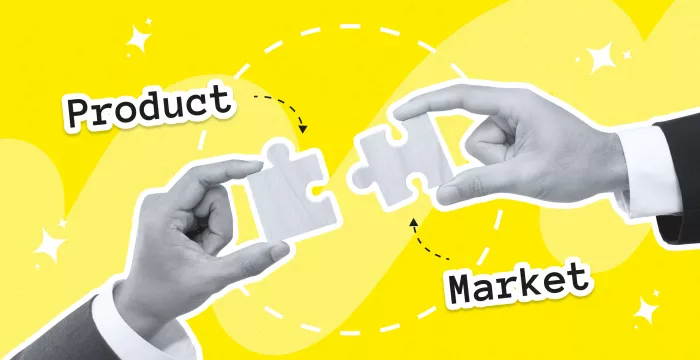
Let’s be real: getting to $1M in ARR isn’t the hardest part of building a SaaS company anymore. With no-code tools, playbooks galore, and growth hacks everywhere, plenty of startups can hit that first milestone. But then comes the stall. Growth flatlines, churn creeps in, and the product that once sold itself suddenly needs a lot more help. And in the scramble to reignite momentum, many founders forget to take advantage of major growth levers—like the R&D tax credit—that could free up cash to reinvest in the product, team, or go-to-market engine.
So, why do most SaaS startups hit this plateau? And how do you break through it to build something that scales beyond $10M ARR? Let’s break it down.
1. Mistaking Product-Market Fit for Scalable Growth

Reaching $1M ARR often means you’ve found product-market fit in a small, passionate segment. But what works for early adopters rarely scales. Many founders overestimate how repeatable their early success is and underinvest in refining their positioning, messaging, and product experience for a broader audience.
How to Fix It:
- Revalidate your ICP (Ideal Customer Profile) as you grow.
- Refine onboarding and UX to reduce hand-holding and scale adoption.
- Run win/loss analyses to understand why you win or lose deals at scale.
2. Building for Features, Not Outcomes
Early traction often comes from feature-rich products that impress early adopters. But as you move upstream or into new segments, buyers aren’t looking for more features—they want outcomes. Many SaaS startups plateau because they fail to evolve their product narrative from “what it does” to “what it delivers.”
How to Fix It:
- Shift product roadmap priorities toward value-driving capabilities.
- Make customer outcomes a KPI across product and success teams.
- Build case studies that show measurable ROI.
3. Scaling Go-To-Market Without a Repeatable Motion
Many SaaS startups rush into scaling sales too early, hiring reps or agencies before they’ve nailed a repeatable GTM motion. Without clear ICPs, messaging, objection-handling, and onboarding processes, scaling GTM only burns cash and slows growth.
How to Fix It:
- Don’t scale sales until you can predictably close leads with a 2-3 person team.
- Build sales enablement collateral and objection-handling playbooks.
- Align marketing, sales, and customer success around shared metrics.
4. Ignoring Churn Until It’s Too Late
Churn is a silent killer. In the early days, strong top-of-funnel growth can mask retention issues. But over time, high churn erodes revenue and compounds the difficulty of scaling.
How to Fix It:
- Analyze churn by cohort, persona, and use case.
- Implement success-based onboarding and proactive check-ins.
- Leverage AI to detect drop-off signals and prompt engagement.
5. Failing to Differentiate in a Crowded Market
There are over 30,000 SaaS companies in the U.S. alone. Standing out requires more than a better UI. SaaS startups plateau when they fail to carve out a distinct positioning and value proposition that resonates with a specific segment.
How to Fix It:
- Find a wedge: a niche segment or pain point to dominate.
- Develop a bold, clear positioning narrative.
- Double down on thought leadership and category creation.
6. Underinvesting in Product-Led Growth (PLG)
If your SaaS product is intuitive and solves a high-frequency problem, it should sell itself—at least partially. Many startups that plateau over-rely on sales and underutilize product-led growth strategies that can drive viral loops, self-serve onboarding, and expansion revenue.
How to Fix It:
- Offer a freemium or self-serve tier with a clear upgrade path.
- Instrument the product to identify power users and upsell opportunities.
- Optimize activation and time-to-value.
7. Not Leveraging R&D Tax Credits and Growth Incentives
Many SaaS startups leave money on the table by not tapping into government incentives like the R&D tax credit. This can free up capital to reinvest in growth, talent, and innovation.
How to Fix It:
- Work with a tax expert to identify qualified R&D activities.
- Use tools that automate credit calculation and documentation.
- Reinvest tax savings into your product and go-to-market teams.
8. Founders Stuck in the Business, Not Scaling It
At the early stage, founders do everything. But to scale beyond $10M ARR, they need to build leadership teams, delegate effectively, and focus on strategic growth.
How to Fix It:
- Hire experienced VPs in product, sales, and marketing.
- Establish clear OKRs and accountability structures.
- Shift your time from operations to vision, culture, and capital.
Conclusion: Scale Is a Strategy, Not a Sprint
Breaking past the $10M ARR mark isn’t about hustle alone—it requires a different mindset, toolkit, and strategy. The SaaS startups that win are the ones that treat scale like a discipline: productizing customer value, systematizing growth, and thinking beyond features and hacks.
If you’re feeling the plateau, you’re not alone. But with the right moves, your next stage of growth is within reach. Revisit your positioning, invest in customer success, embrace PLG, and don’t leave incentives like the R&D tax credit on the table.
Because the SaaS companies that break through $10M ARR don’t just grow. They scale with purpose.





Comments